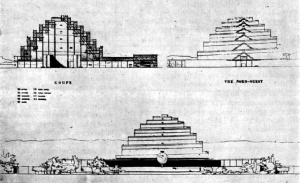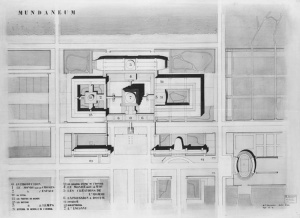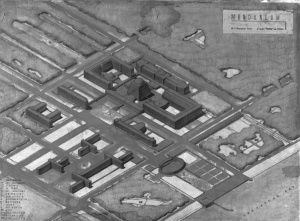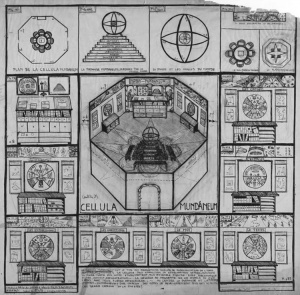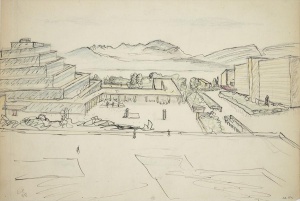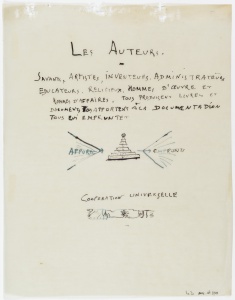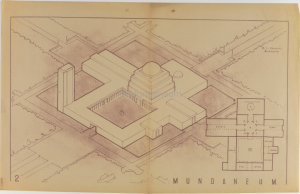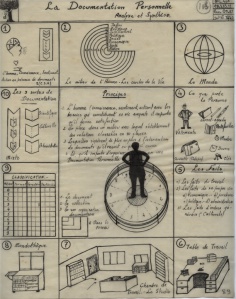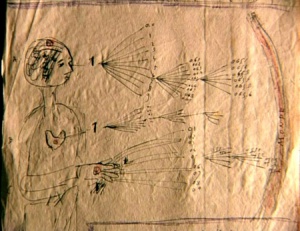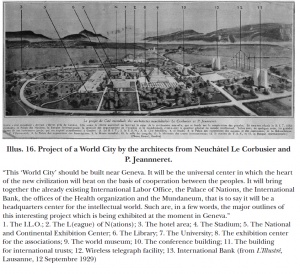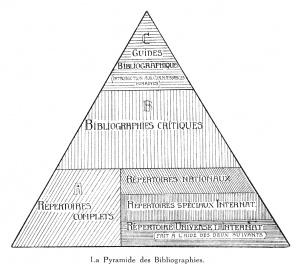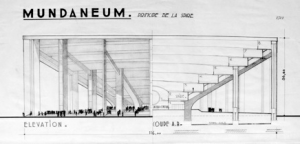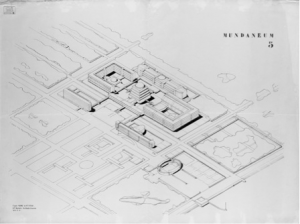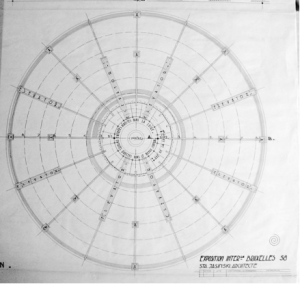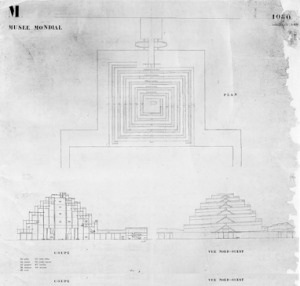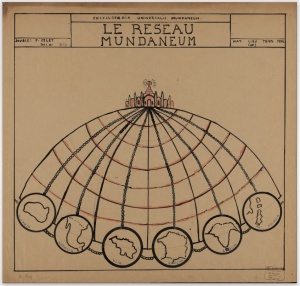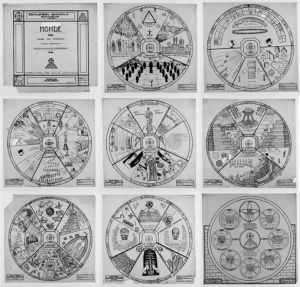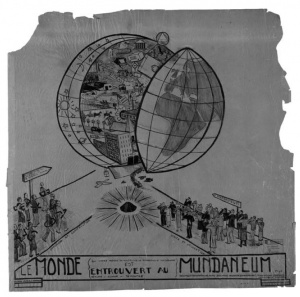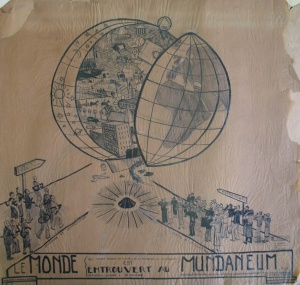Difference between revisions of "Les Pyramides"
From Mondothèque
m (FS moved page La Pyramide to Les Pyramides: trying to tell apart category and page) |
|
(No difference)
| |
Revision as of 13:32, 15 December 2015
A slew of pyramids can be found in all of Paul Otlet's drawers. Knowledge schemes and diagrams, drawings and drafts, designs, prototypes and architectural plans (including works by Le Corbusier and Maurice Heymans) employ the pyramid to provide structure, hierarchy, precise path and finally access to the world's synthesized knowledge. At specific temporal cross-sections, these plans were criticized for their proximity to occultism or monumentalism. Today their rich esoteric symbolism is still readily apparent and gives reason to search for possible spiritual or mystical underpinnings of the Mundaneum.
Pyramide
Paul Otlet (1926):
“Une immense pyramide est à construire. Au sommet y travaillent Penseurs, Sociologues et grands Artistes. Le sommet doit rejoindre la base où s’agitent les masses, mais la base aussi doit être disposée de manière qu’elle puisse rejoindre le sommet.”[2]
An axonometric view of the Mundaneum gives the effect of an aerial photograph of an archeological site — Egyptian, Babylonian, Assyrian, ancient American (Mayan and Aztec) or Peruvian. These historical reminiscences are striking. Remember the important building works of the Mayas, who were the zenith of ancient American civilization. These well-known ruins (Uxmal, Chichen-Itza, Palenque on the Yucatan peninsula, and Copan in Guatemala) represent a “metaphysical architecture” of special cities of religious cults and burial grounds, cities of rulers and priests; pyramids, cathedrals of the sun, moon and stars; holy places of individual gods; graduating pyramids and terraced palaces with architectural objects conceived in basic geometrical shapes of cube, cylinder, prism and pyramid, the main axis of which is symmetry with emphasis on horizontality.
The universe (which others call the Library) is composed of an indefinite and perhaps infinite number of triangular galleries, with vast air shafts between, surrounded by very low railings. From any of the triangles one can see, interminably, the upper and lower floors. The distribution of the galleries is invariable.
The ship wherein Theseus and the youth of Athens returned had thirty oars, and was preserved by the Athenians down even to the time of Demetrius Phalereus, for they took away the old planks as they decayed, putting in new and stronger timber in their place, insomuch that this ship became a standing example among the philosophers, for the logical question of things that grow; one side holding that the ship remained the same, and the other contending that it was not the same.
The face of the earth would be much altered if brick architecture were ousted everywhere by glass architecture. It would be as if the earth were adorned with sparkling jewels and enamels. Such glory is unimagmable. We should then have a paradise on earth, and no need to watch in longing expectation for the paradise in heaven.
"Alimentation. — La base de notre alimentation repose en principe sur un trépied. 1° Protides (viandes, azotes). 2° Glycides (légumineux, hydrates de carbone). 3° Lipides (graisses). Mais il faut encore pour présider au cycle de la vie et en assurer la régularité, des vitamines : c’est à elles qu’est due la croissance des jeunes, l’équilibre nutritif des adultes et une certaine jeunesse chez les vieillards."
See Cross-readings, Rayward, Warden Boyd (who translated and adapted), Mundaneum: Archives of Knowledge, Urbana-Campaign, Ill. : Graduate School of Library and Information Science, University of Illinois at Urbana-Champaign, 2010. Original: Charlotte Dubray et al., Mundaneum: Les Archives de la Connaissance, Bruxelles: Les Impressions Nouvelles, 2008. (p. 37)
- ↑ https://en.wikipedia.org/wiki/Pyramid
- ↑ Paul Otlet, L’Éducation et les Instituts du Palais Mondial (Mundaneum). Bruxelles: Union des Associations Internationales, 1926, p. 10. ("A great pyramid should be constructed. At the top are to be found Thinkers, Sociologists and great Artists. But the top must be joined to the base where the masses are found, and the bases must have control of a path to the top.")





